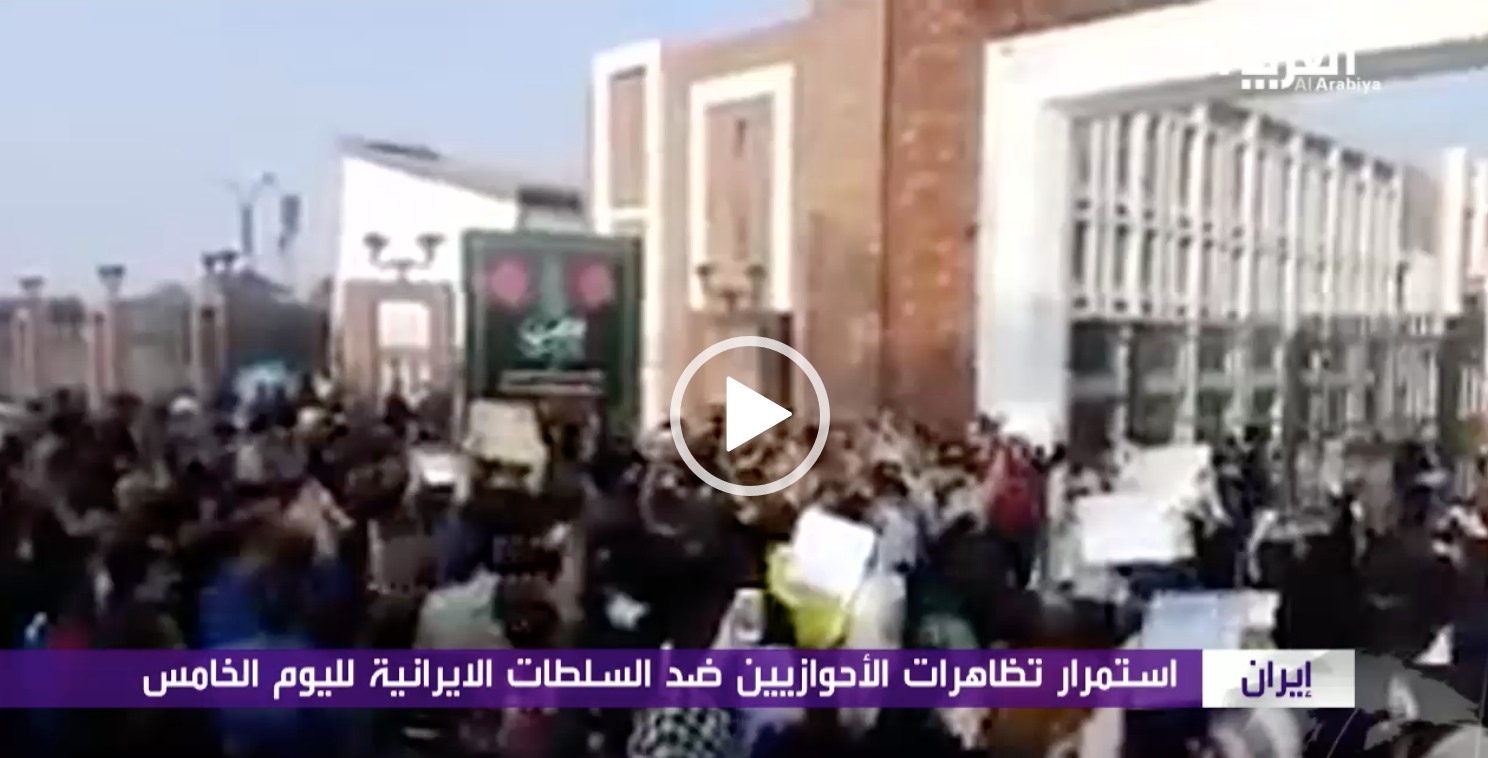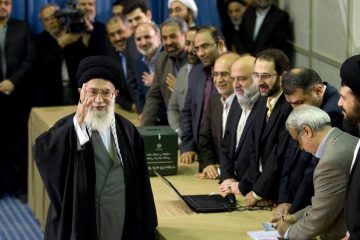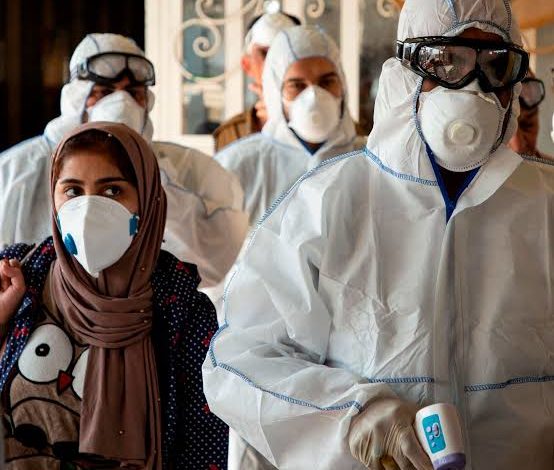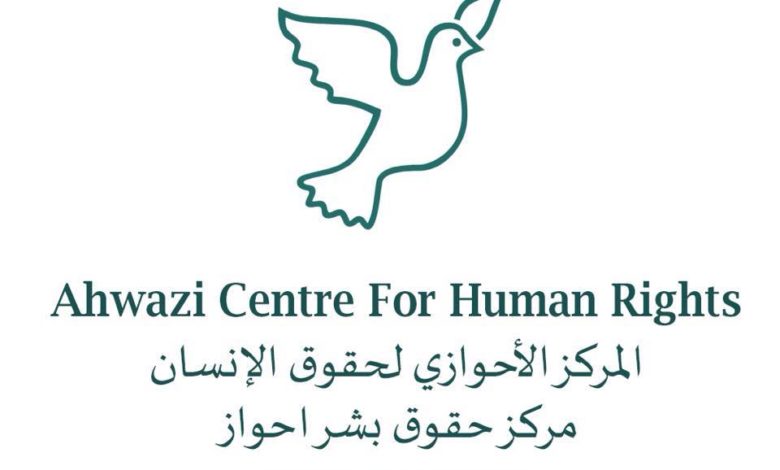The Iranian regime has two faces that it presents to the world

The first is presented with the usual hardline sectarian militarist rhetoric directed at both regional countries and what you might call its base of ‘true believers’.
The second is the PR-conscious “moderate reformist” fantasy which the regime peddles in its efforts to fool naïve Western diplomats and politicians into believing that it’s genuinely pursuing progressive policies. Both these narratives are, in different ways, based on bluster and falsehoods.
The hypocrisy of these different faces is startling. Even while the regime represses its people by ruling the country with an iron fist and expands control across the region via sectarian militias, it seeks to become part of and ingratiate itself with the liberal globalized world order it claims to detest so much. Its motives are as superficial as its rhetoric, with financial gain for the kleptocrats who rule the country and the avoidance of sanctions over it’s widely condemned nuclear programme – its top priority.
When the regime addresses the region, in an attempt to intimidate and dominate its peoples and export its hardline sectarian Islamic doctrine, it is pursuing the ideology of the founder of the so-called ‘Islamic Republic’, Ayatollah Khomeini. Khomeini famously stated that ‘the road to Jerusalem passes through Karbala’ and this remains a core objective of the regime – to destroy Israel and subjugate the entire Mashreq region under its own theocratic hegemony.
In practice, this means that the regime pays no heed to the sovereignty of its neighbors, viewing them as part of its empire or pawns in the pursuance of its hegemonic interests. As far as the regime’s much-vaunted love of science and technology is concerned, this is directed almost exclusively towards weapons manufacturing and covert work on its nuclear programme, rather than utilizing its resources for the good of Iranians or any other peoples.
In addition, Iran’s investment in science is primarily directed by the ideas of theocratic law and the infallibility of the ‘Supreme Leader’, whose power is absolute. As a supposedly divinely anointed figure, the Supreme Leader is viewed as being above science and impervious to any policy changes suggested by scientists, specialists or technocrats.
Although the West has had limited success in increasing scrutiny of the Iranian regime’s nuclear programme, it continues to destabilise the region through use of its proxy extremist militias which, in turn, reinforce and export extremist ideology and corresponding mirror extremism – the rise of the so-called Islamic State was in large part a reaction to Iran’s sectarian activities in Syria and Iraq. It is difficult to argue that Iran, under the Islamic regime, will ever be a productive regional neighbor when its ultimate stated aim is the creation of a sectarian regional “Islamic Nation”, one founded on the brutal relations of imperialist domination with a theocratic bent.
Regarding the Arab states, much of this is self-inflicted. They have failed to take adequate action to rid themselves of the Iranian regime’s hegemonic expansionist threat. Today they are paying a terrible price, along with the entire region, for that failure. Iran’s regime already has an open and murderous military presence in Iraq, with Iranian officials demanding that Sunni Arab Iraqis be expelled from their own nation, saying, ‘Arabs should go back to the desert from which they came’.
Even those Shiite Arabs who refuse to accept Iranian dominion are unsafe from the Tehran regime’s anti-Arab racism. Iraqi Shiites face the stark choice of either accepting the Khomeinists’ absolute power and becoming submissive serfs of the Persian state or being killed and persecuted along with their Sunni countrymen. This is taking place in open view even whilst Iraq’s Iranian-controlled proxy regime sinisterly maintains the pretense of inclusivity and opposition to sectarianism.
As well as seizing control of Iraq, Iran’s satraps also largely control Lebanon, where its main proxies Hezbollah can bring down and stall the formation of governments that they and Iran dislike with extreme ease. They are also key players in the nightmarish wars in Syria and Yemen. Since 2011, and more so since the 2015 ‘legacy deal’, the Tehran regime and its proxies have been increasingly emboldened, continuing to extend their influence and control of the region.
All this means that there is no real incentive for Iran’s regime to change or modify its behavior, with its hateful rhetoric growing in tandem with its power, and all of its resources being directed to its imperialist purposes. Even Iran’s close ally North Korea, with its own totalitarian regime, seems more likely now than the Khomeinists to ever change for the better.
With Iran now the sole remaining wholly theocratic state, it is not in the interests of the ruling clerics to abdicate any of their power to introduce democracy or democratic politics in any way. What they are doing now is working to strengthen and maintain if not to actively increase their power, to make sure resistance to their agenda remains weak. In addition, if Iran were to become less isolationist, this would open it to external influence, criticism, and ostracism by other more democratic countries.
The Iranian regime’s dogmatic version of Twelver Shi’ite theology means that it is incapable of playing any positive, progressive or moderating role. Indeed, it relies on fomenting extremism and crises and has no clear purpose but warmongering and facilitating terrorism, for example in Syria, Lebanon, and Yemen.
A central tenet of Khomeinist doctrine is that the ‘Twelfth Imam’, the savior figure on which the regime’s founding Wilayat-e Faqih (‘Rule of the Jurist’) creed is based, can only reappear when chaos is at its greatest level. This form of millenarianism is arguably the regime’s primary purpose – fomenting this chaos to bring about the Twelfth Imam’s re-emergence.
So long as Iran is ruled by this extremist doctrine, under which the ‘Supreme Leader’ is effectively a divine figure whose decrees are unquestionable, any dissent with his order is a death penalty offense. The political system under the Supreme Leader is window-dressing. Presidents, who are selected for ‘elections’ from a shortlist drawn up by the Supreme Leader based on their religious fervor, must be approved by him and have no real power of their own to negotiate in any way outside the Wilayat-e Faqih doctrine.
The regime’s oppression is absolute.
Any public call for reform, equality or human rights is met with murderous retaliation by state forces. Behind the image depicted by smooth regime diplomats and tourism brochures, the lived reality in Iran is third world poverty concentrated in underprivileged and ruined towns and villages. The regime, which came to power by promising Iranians an escape from the brutality of the Shah’s regime, have instead simply put a theocratic cloak on it.
Due partly to the regime’s longevity, maintained by this Orwellian oppression, many Iranians have never known anything but the so-called ‘Islamic Republic’, and feel unable or unwilling to challenge its brutal dominance. It should be remembered that all the media outlets seen by Iranians are state-controlled, making indoctrination far easier. Many Iranians have, therefore, developed a regressive fundamentalist mindset, steeped in fables and tales of Iran’s historical imperial glory and fearful of change or any effort to move forward.
This attitude of learned helplessness and submissiveness is carefully nurtured by the regime to perpetuate its continuing power. Like the Iceberg Phenomenon, the regime shows only a small part of itself to the outside world, whilst the depth of inequality, oppression and suffering within the country are carefully hidden and largely unseen.
Iranians are divided between conservatives and ultra-conservatives, turbaned reformists and unturbaned reformists. In other words, whilst many groups privately oppose and despise the regime, the theocratic leadership’s ‘divide-and-rule’ strategy pits one group against the other, reducing their effectiveness.
In addition, the Islamic Revolutionary Guards Corps (IRGC), a group fanatically and aggressively loyal to the Supreme Leader, has tentacles in every area of Iranian life, including culture, the economy, education, industry, and services. Iranians, who are all too familiar with the IRGC’s boundless cruelty, are terrified to take any action that might attract the guards’ attention, with activists routinely arrested and tortured for the mildest infraction or condemnation of the regime.
Minorities, like Ahwazi Arabs, Kurds, and Baluchis, face even worse persecution, with racist abuse being standard. The IRGC also has the power to intervene in the government’s decision-making mechanisms. It is the watchdog appointed by the religious establishment to prevent anybody or entity from contradicting or challenging the Islamic regime.
Many citizens became more optimistic at the recent outbreak of mass protests across Iran, including in minority regions, hoping as in 2009 that this would help to bring about the regime’s downfall. As in 2009, the protesters looked to the rest of the world for support, but received no meaningful backing. These protests are still continuing, although thousands of protesters have been arrested and imprisoned.
The protests are also driven by frustration with yet more broken regime promises; despite the regime’s promises of improvements following the 2015 P5+1 nuclear deal, mass poverty, unemployment, and ruinously expensive involvement in regional wars continue to blight Iran, with the regime investing billions in wars across the region even while neglecting Iranians’ suffering. This has led to nationwide protests.
Reforms are unlikely in the near term, however, due to the theocratic regime’s complete stranglehold on Iran and its toxic effects on the populace. The people are fully aware that the ‘elections’ are a farce, wholly controlled by the mullahs since 1979, with the people simply ticking a box to appoint Khamenei’s choice.
Whilst candidates routinely make empty promises of reform, this is pie-in-the-sky fantasy with no chance of being implemented. Under former ‘reformist’ Hashemi Rafsanjani, the IRGC began their penetration of every aspect of economic and political life. Another ‘reformist’, Mohammed Khatami, got 20 million votes based on his promises of change, which – of course – he failed to provide.
Ahmadinejad’s policies, meanwhile, were notorious for leading the country’s economy to the brink of disaster. Most recently, the people elected Rouhani – this ‘moderate reformist’ has overseen Iran’s rise to become second only to China in the number of per capita executions, with his promises of reform long ago forgotten.
Khatami, whilst under house arrest by the regime, called for starting a dialogue and national reconciliation to end the political deadlock in the country. This request was turned down by the conservatives, including Khamenei, who said such dialogue would be senseless, a view echoed by the head of Iran’s judiciary, Sadiq Larijani, a slavishly loyal Khamenei confidante. There is very little chance of a figure like Khatami having any real influence over the general population, whilst under house arrest and unable to mobilize Iranians. In short, there is no incentive for the clerical regime to change.
When we look at the domestic situation in Iran since 1979, therefore, we see no progress but an endless cycle of oppression, regression, and stagnation for all the reasons mentioned above.
The most recent protests in Iran have seen different dimensions, however, with demonstrations breaking out over wider issues, as well as the usual complaints of oppression, corruption, poverty and dire living conditions. The latest protests have also brought tensions over long-ignored subjects, such as the regime’s racism and exploitation of natural resources in ethnic minority regions, to the fore, with the regime no longer to brush off these concerns as anger grows across the country.
These protests also reveal a growing chasm between the 20 million young Iranians who account for around a third of Iran’s population and the geriatric clerical establishment. Greater exposure to the outside world via smartphones and social media means that this tech-savvy generation is less susceptible to the regime’s theocratic indoctrination and more determined to pursue modernity, sexual equality, freedom and human rights.
In conclusion, therefore, while Iran’s extremist regime continues to cling onto power by brute strength, it has now lost the absolute power it enjoyed over the Iranian people – it is playing a losing game of whack-a-mole in its efforts to crush freedom. As soon as the IRGC and Basiji succeed in murderously quashing a protest in one place, others break out elsewhere.
Although the regime’s massive military might means that protests alone can’t bring down the theocratic leadership, the recent daring call by a group of Iranian intellectuals for a referendum on the nature of Iran’s governing system shows that while the ayatollahs’ power expands devastatingly throughout the region, its troubles at home are also growing.
Written by Rahim Hamid
15/03/2018





